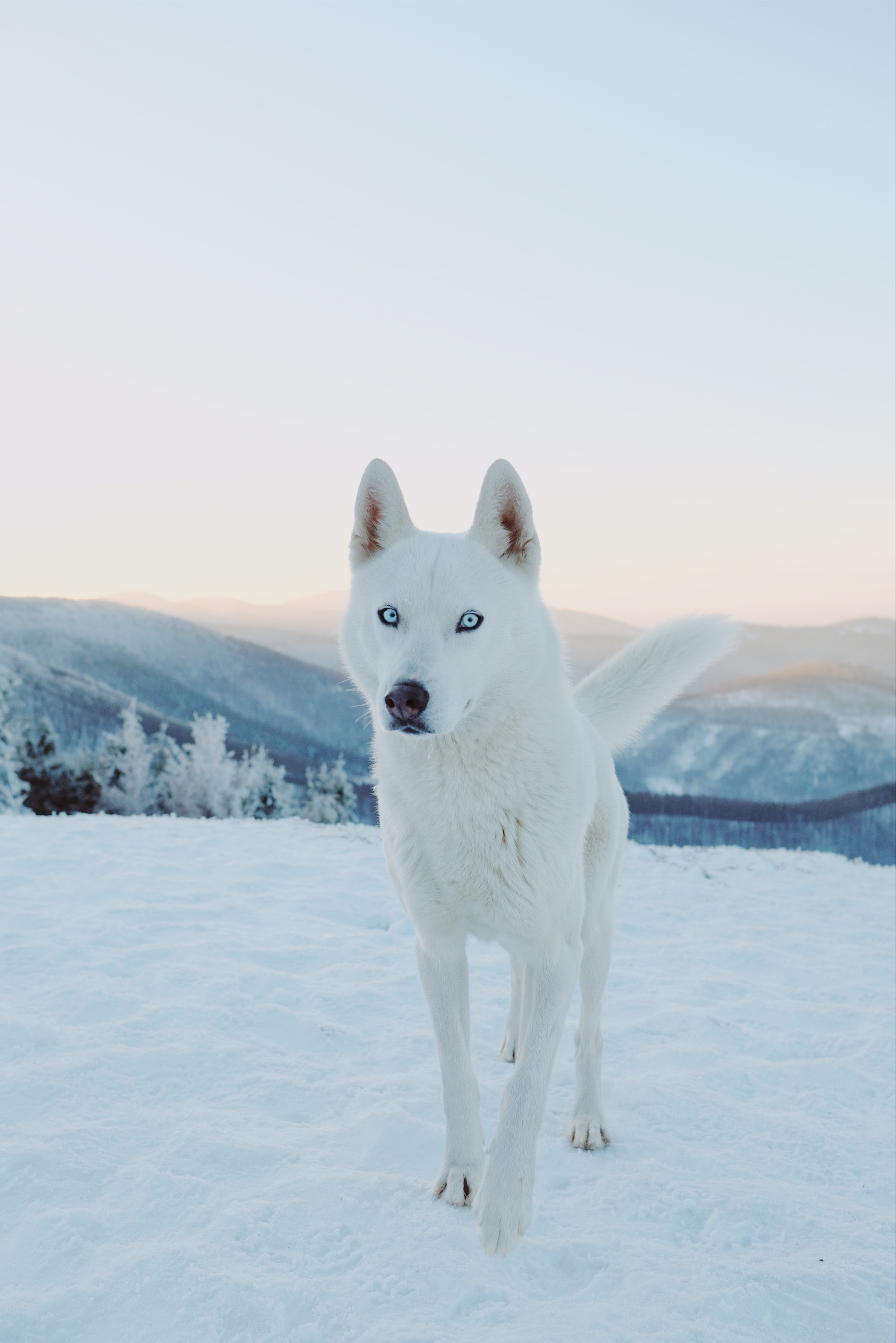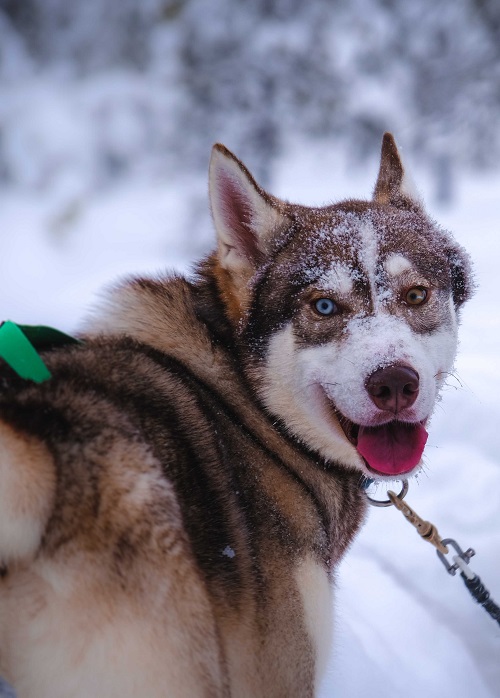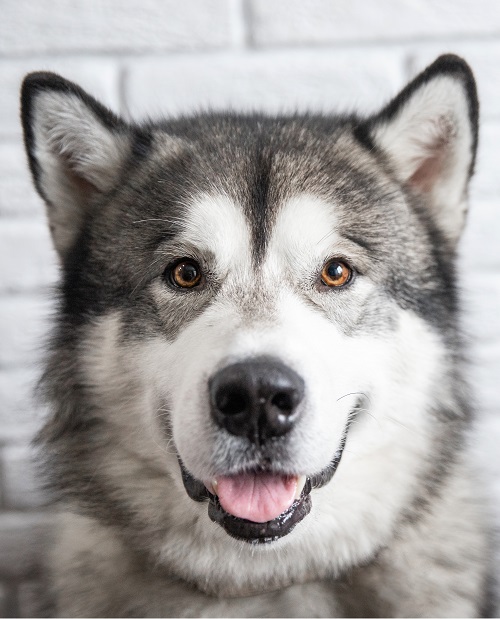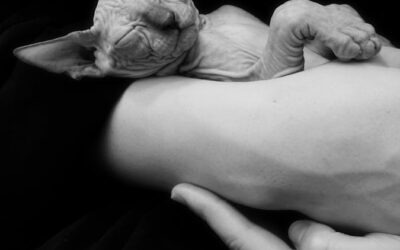Considering adding one of the classic sled dog breeds to your family? Not surprising, as they can be highly intelligent and fun additions to your home. The problem, though: how to choose?! The two classic sled dogs are Siberian huskies and Alaskan malamutes (although there are also Alaskan huskies), and since they’re so similar, it’s not easy to figure out which is best for you.
Let’s go into the difference between a husky and a malamute dog to help you decide!
Siberian husky breed history
The Siberian husky is a medium-sized dog with a thick double coat. As its name suggests, the breed originates from Siberia, where it was bred by the Chukchi people, indigenous to some of the harshest areas possible. Huskies were working dogs, used to pull sleds, and that’s also why they were eventually introduced to Alaska in 1908.
In Alaska, huskies were quickly discovered to be ideal not just for sled pulling, but also sled racing. Not surprising: they’re not actually that large or heavy, making them quicker and more agile than many other working dog breeds used in the region.
[divilifeshortcode id='7986']
Alaskan husky
If you associate only Siberian huskies with sled racing, you may be thinking in the wrong direction, somewhat. Let us introduce you to the Alaskan husky, the actual most common sled racing dog!
The Alaskan husky was bred specifically for sled racing. It’s not a recognized breed, as it’s a mix of other dogs. Among them are the Siberian husky and malamute, but also European breeds. We won’t consider them too much in this comparison, as due to their mixed origin, there’s a lot of variation in Alaskan huskies. They make a great option if you can’t choose, though!

Blue eyes? It’s a husky!
Alaskan malamute breed history
In the section on Siberian huskies, we mentioned that they are smaller than other working dog breeds used in Alaska. One of the larger breeds long used for pulling loads on sleds and other work was the Alaskan malamute.
Malamutes are another spitz breed, one that predates many of the dog breeds we know today by a fair bit. It was probably bred by one of the native peoples of Alaska, the Malemiut, which form part of the Iñupiat (you can see where the dog got its name!). They didn’t just use their malamutes for sledding: the dogs were also used for hunting and companionship. Malamutes also played a role in some of Alaskas gold rushes. Like many others, the breed got in significant trouble during World War II and needed serious revival efforts.
Nowadays, malamutes are Alaska’s state dog.
Malamute vs Husky appearance
Both Siberian huskies and Alaskan malamutes belong to the Spitz family of dogs, a group of breeds that usually originates from Siberia and the Arctic and is known for its thick fur and pointed snouts.
This being said, there are some differences between the breeds. Not surprising if you consider that they were originally bred for two different working purposes!
Size & weight
The most notable difference between a husky and a malamute dog is their size. According to the American Kennel Club (AKC), the below are the average sizes for Siberian huskies and Alaskan malamutes. It’s clear to see which of the two is bigger!
| Sex & breed | Height | Weight |
| Male Siberian husky | 21-24” | 44-60 pounds |
| Female Siberian husky | 20-22” | 35-51 pounds |
| Male Alaskan malamute | 24-26” | 79-95 pounds |
| Female Alaskan malamute | 22-24” | 71-84 pounds |
Coat
Both Siberian huskies and Alaskan malamutes have that typical double spitz dog coat. Length is medium for both breeds, although according to the AKC, the malamute’s coat should be thicker and a bit rougher. Despite this, it’s listed as a little less prone to shedding a lot.
Coat colors are almost the same in both breeds: white bellies and grey, black or brown on top. The Siberian husky’s coloration can be a bit more varied, with the breed being known for more intense color markings and more different patterns.
Did you know? There are some other differences between huskies and malamute dogs, although they’re mostly aesthetic and don’t make a difference in which breed is more suitable for you. For example, blue eyes are not allowed in the malamute breed standard, whereas it’s perfectly acceptable in Siberians, which may also have two different colored eyes. Additionally, malamutes carry their tails curled over their bodies, whereas husky tails point downward. With a keen eye, it’s not difficult to tell the two apart.

Heterochromia (different colored eyes)? Siberian husky!
Malamute vs husky personality
So, we’ve concluded that there are definitely some visual differences between huskies and malamute dogs. You should hopefully be able to tell the two apart at this point!=
But let’s get to the more important bit: personality. After all, this will play a much bigger role in whether one or the other is the better fit for your family.
Siberian husky personality
Huskies are absolutely not one-person dogs: they tend to love almost everyone. This is also what makes them pretty bad as guard dogs, so if that’s what you’re looking for, you’re barking up the wrong tree (pun intended!).
If you’re interested in getting a husky, you need to keep in mind that these are absolute bouncy balls that will have trouble understanding playtime is over. They also love to be outdoors and run around, which, combined with their intelligence, is why the breed is known for its escape artistry!
Siberian huskies are also known for howling rather than barking a lot of the time, being suitable for families with children, and sometimes struggling with being left alone due to their extremely social nature. They need a lot of exercise in order to burn off their high energy levels, and don’t forget training, as they learn easily but can become a handful without proper socialization.
Alaskan malamute personality
Although they might be slightly better guard dogs than Siberian huskies, it’s still probably not the best idea to get an Alaskan malamute if that’s what you’re looking for. They’re equally easy to train but problematic if not socialized well, especially with regard to other dogs. They can be a bit more difficult to get used to their fellow furry housemates.
Alaskan malamutes are considered less mischievous and chatty and more dignified than their husky cousins, although they can still be a handful. They’re just as high-energy, loyal and playful, though. And they’re also known for a similar talent at escaping!
The Alaskan malamute is a bit more independent than huskies tend to be, but that still doesn’t mean they’re a good choice for folks who are away a lot. You definitely need a pet sitter if you’re going on holiday.
Malamute vs Husky: Which breed is better for you?
Before we go into this, we just want to make sure you know that neither Siberian huskies nor Alaskan malamutes are suitable beginner dogs. They require a lot of exercise and lots of socialization to prevent them from tearing up your house, and they can also shed quite a bit.
If you do have what it takes, then you should consider size first and foremost. Both dogs need a lot of space to run around, but malamutes really require the XL version of everything! Other than that, huskies are great for those who like a dog that’s maybe a bit more silly, involved, noisy and unpredictable. Malamutes might be ideal for someone looking for a slightly lighter version of those traits and a somewhat less involved breed.
In the end, the differences in personality aren’t huge. And if you’d like a bit of both, you could always consider an Alaskan husky or an Alusky, which is a mix of the two breeds.









